Time, Place, Manner
The politics of speech on the American campus.
The Politics of Speech on the American Campus
Freedom of speech on campuses has long been under attack, but now more than ever.
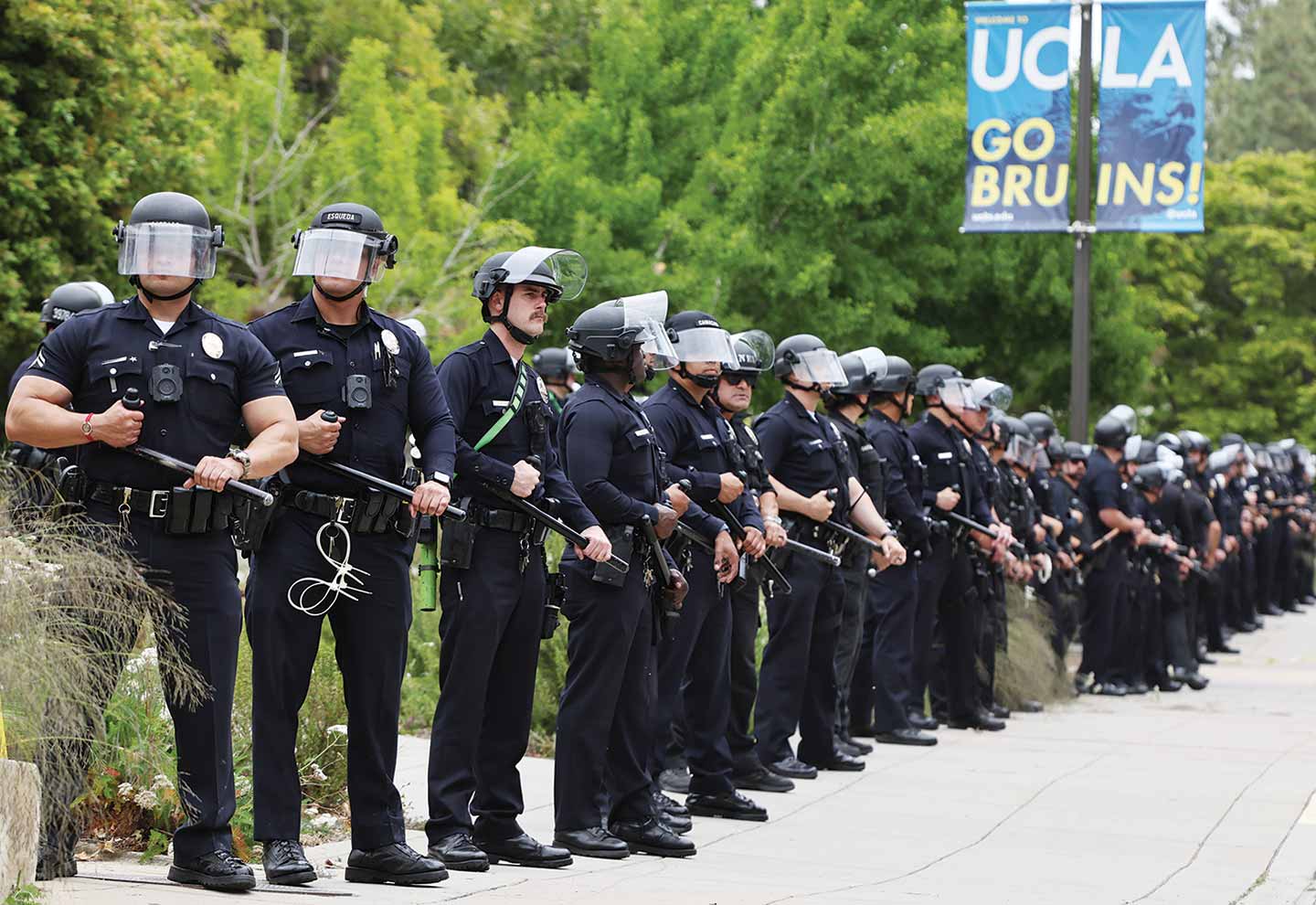
In retrospect, WilmerHale, the law firm that prepared Harvard president Claudine Gay and UPenn president Liz Magill for their congressional testimony last December, appears to have missed the point of the exercise. The success or failure of their clients’ performance would not be determined by legal nitpicking; the hearings were always going to be political theater. Trying to stay as close as possible to the language of the law—technically, that whether speech can be prohibited depends on its “context”—the presidents refused to make the political statement that the moment required: that if there had been genocidal speech threatening Jewish students, then of course that speech would not have been permitted.
Books in review
Campus Free Speech: A Pocket Guide
Buy this bookColumbia’s president, Minouche Shafik, was advised by the firm of Covington and Burling, but like the other university heads, she failed to challenge the (false) Republican premise that her institution was awash in antisemitism. Yet seeking to avoid the fate of her predecessors, Shafik promised to crack down on the students and faculty responsible for this purportedly injurious speech and showed no sign of being deterred from that crackdown by the principles of academic freedom or the need to consult with Columbia’s faculty. This approach satisfied neither the Republicans on the committee nor the faculty back home, who voted no confidence in her. After a set of even more disastrous decisions, including calling in the New York Police Department (twice) to arrest student protesters, Shafik ended up resigning like her fellow Ivy presidents.
Freedom of speech on campuses has been a vexed subject for a long time. As early as 1915, scholars in the nascent American Association of University Professors were growing increasingly troubled by what they had learned to see as abuses of power by university administrators and politicians, and they wrested tenure protections for what they had learned to call “academic freedom.” Until then, university presidents and trustees had claimed the right to fire faculty of whose sentiments they disapproved. Yet even after having won these rights, faculty—as well as students and employees on campus—found themselves vulnerable. At Columbia, opposition to the United States’ entry into World War I was grounds for dismissal and during the Cold War universities forced faculty to sign loyalty oaths. The founders of the “free speech” movements in the 1960s discovered, as many afterward have also done, that freedom of expression and association on university campuses is precarious. Federal laws do not necessarily protect it.
Cass Sunstein, a professor at Harvard Law School, takes up this contentious subject in his new book, Campus Free Speech: A Pocket Guide. In it, he pledges himself to thinking through what the law can and cannot do on the matter of speech rights at universities. With admirable clarity and efficiency, he informs us on what the law says, for example, about when speech does or doesn’t constitute intimidation or harassment. He also offers us scenarios, real and hypothetical, that have the compelling, mystery-solved quality of The New York Times’ “The Ethicist” columns. And yet his book does not address the larger questions that hovered over the recent congressional hearings and, more generally, over matters relating to campus speech: Does the law offer the best advice available to universities seeking to balance freedom of speech against extra-academic pressure, whether from politicians and donors on the right or from activists and student protesters on the left? Should universities be guided by political and moral standards other than legalistic prudence? Is it even prudent to put your faith in lawyers, as the university presidents did before the House, and in the law, as Sunstein recommends? Can the law really ensure that campuses remain venues for the exploration and expression of competing ideas and views?
From the outset of his book, Sunstein makes his allegiances clear. “On these issues,” he writes, “I like existing law a lot.” But how committed to the existing law should the rest of us be—professors and cafeteria workers, librarians and researchers, students and parents?
To begin with, the answer depends on what kind of campus you are on. At public universities, the First Amendment reigns supreme: Speech cannot be restricted because, at least in theory, the university property belongs to the people. Yet when it comes to private colleges and universities, administrators are not, as Sunstein notes, “bound by the Constitution”: They “can regulate speech as they like, at least in the sense that the First Amendment does not apply to them.” The law does not, for example, forbid codes restricting hate speech on campus. That sort of regulation is protected by academic freedom, which is not itself protected by the Constitution. Academic freedom is a privilege of faculty self-governance that was justified on the grounds that warding off outside interference is necessary in order to serve the mission of the university.
Academic freedom is often confused with freedom of speech, but the two are quite different. Freedom of speech is guaranteed by the Constitution and is universal in its application. As it is generally understood, academic freedom applies only to professors and it protects both their speech and their power to regulate the speech of their fellow academics. Students and other employees on campus cannot appeal to it; they must rely on the First Amendment.
The First Amendment has its limits, and properly so. Speech intended to incite an unlawful action that is both likely to occur and imminent is not protected. Neither is speech that will lead to a direct threat of harm. However, as Sunstein usefully notes, chanting “Intifada” does not fall into this category of speech and is “highly likely to be protected by the First Amendment.” Criticisms of Israeli violence in Gaza, he adds, would also not count as a direct threat of violence, even if they may make some students feel fearful or uncomfortable. Student feelings cannot be taken as decisive.
So far, so good. But on private campuses, there are ways of getting around the First Amendment. A university can, for example, assert its rights as a property owner. Constitutional protections do not extend to the takeover of university buildings. “There is no First Amendment right to occupy and block access to a building,” Sunstein notes. The law protects speech, but trespassing is illegal—even, it seems, for students who have paid rent for rooms on campus. And so, even without taking over a building, student protesters can find that the First Amendment does not protect their presence.
Sunstein concedes that student protests can legally be closed down by a hostile administration. But he makes this concession only in a comment appended to his larger argument: “(A time, place, and manner restriction would raise different questions.)” Though he saves this observation for a parenthesis, it is precisely by raising questions of the time, place, and manner of the Gaza protests that universities have tended to do what Sunstein says they otherwise have no right to do: ban the protests. The local chapters of Students for Justice in Palestine and Jewish Voice for Peace were suspended at Columbia not for criticisms of Israel or for antisemitism (of which there was none), but for violating time, place, and manner restrictions. These were restrictions that the administration had changed at the last minute, after the Hamas attacks on October 7, and in so doing, without due process, they changed the rules of the game.
Tellingly, these restrictions are also the legal means by which the Foundation for Individual Rights and Expression (FIRE), an organization whose declared mission is to defend free speech, has tried to reconcile its defense of free speech with its recent refusal to defend the free speech of student protesters in the Gaza encampments. As Amia Srinivasan summarizes in an essay for the London Review of Books, FIRE and other supposed defenders of free speech have maintained “that university bans on encampments do not violate the First Amendment, since free speech can legitimately be subject to restrictions on ‘time, place, and manner.’” Where criticism of Israel is concerned, that’s all that university administrators need to stop the First Amendment from protecting the student protesters.
Legally speaking, the application of time, place, and manner restrictions is supposed to be “politically neutral.” But as Srinivasan notes, “it is no secret that university administrators, in their decisions about how to handle the protests, are bowing to partisan political pressure from pro-Israel legislators and donors.” At Columbia, those restrictions were rewritten with the Gaza protests in mind. As Srinivasan explains, the Columbia chapter of Students Supporting Israel was carrying on counterprotests at the same time and place, and yet this group was not suspended.
This does not look like political neutrality. Yet Sunstein says nothing to suggest that he disapproves of the Columbia administration’s conduct. Taking up the example of the Gaza protesters directly, he says the protests were “in violation of the university’s rules about how to use campus spaces”: time, place, and manner rules that “would be exceedingly difficult to challenge.” The protesters could be reclassified as trespassers, and “trespassers can be suspended or arrested.” Thus the freedom to protest melts away, a grand legal principle eviscerated by what will look to many like a technicality. So speaks the existing law that Sunstein likes a lot.
The law also picks its times to speak. When Srinivasan reminds us that members of “the free-speech brigade” avoided signing open letters in defense of scholars like Jodi Dean, who had been suspended from teaching because of her comments on Israel, and instead “found justifications for the draconian repression of student protest,” she raises the question of whether these protests are often cracked down on primarily because of what they are protesting. As Jeannie Suk Gerson notes in The New Yorker, when, in 2011, Harvard students erected tents on campus during the Occupy movement, the administration decided that time, place, and manner restrictions were secondary and could be overridden by the university’s commitment to freedom of expression. But in 2024, when students mounted the same kind of demonstration, this time against Israel’s war on Gaza, they were severely disciplined. What had changed? Only, it would seem, the target of their protests.
One might argue that there are other reasons why Harvard limited speech in one case and not in the other. Suk Gerson suggests one possibility: the fact that “universities’ commitments to free speech have weakened over time” because of claims (repeated by Harvard’s president) that “someone’s speech constitutes intimidation or harassment.” But no matter what has caused these commitments to weaken, the real takeaway is that university administrations are not constrained by the law. They have always been empowered to ignore time, place, and manner restrictions, however well-grounded those restrictions may be in the law, as Harvard did in 2011 and as other university administrations have done in the past eight months. Administrators can take a morally and politically generous view of what the students are standing up for, whether “existing law” is on their side or not. They can also choose not to do so.
Popular
“swipe left below to view more authors”Swipe →In short, in relying so heavily on the First Amendment, Sunstein misses how so much of what protects or hinders speech happens (as it should) outside the law.
Taking a morally and politically generous view of student speech—and, for that matter, everyone else’s—has long been an important part of what makes a university a university. Academic freedom has long been what has helped regulate and protect this view. But like the Constitution, academic freedom as it is currently understood cannot offer this mission of the university adequate protection for it protects only the speech of tenured faculty and not that of adjuncts, students, librarians, and janitors—all of whom remain subject to the laws of property and the holders of monetary power and institutional authority. These are members of the university community too, yet they can be expelled or fired at will. Anyone who professes satisfaction with academic freedom as it exists today risks playing into the hands of the Republican attack on “educated elites.” When Republicans try to roll back academic freedom because it serves “elites,” their goal must be resisted, but they are not 100 percent wrong.
The need to extend academic freedom so that it covers more people, especially nontenured faculty, is one of the arguments proposed by Michael Bérubé and Jennifer Ruth in their book It’s Not Free Speech: Race, Democracy, and the Future of Academic Freedom. Yet they raise another problem with academic freedom: Even when it is interpreted more expansively, they argue, academic freedom is not intrinsically committed to any given politics, and so the freedoms it affords university members to regulate speech on their own can also be shaped by the politics of those university members. Like the law, it is subject to tectonic shifts in public opinion.
In the 1970s and ’80s, for example, scholars who opposed the call to create academic fields and institutes dealing with race, gender, sexuality, and disability claimed they were resisting outside pressure and acting in the name of academic freedom. They lost that battle, and the university is the better for it. Another example: In 2006, the American Association of University Professors took a position against academic boycotts. In August 2024, the AAUP’s “Statement on Academic Boycotts” declared that they could indeed be justified by the mission of higher education. The statement cites South African apartheid and the American war in Vietnam, but the implied context now, of course, is the killing in Gaza, including the almost complete destruction of Gaza’s educational institutions.
Today, as in the past, political and moral commitments can influence the regulatory impulses of academic freedom, for better and for worse. It is again in the name of academic freedom that certain scholars resist calls for divestment from companies profiting from Israeli militarism or from fossil fuels and climate change. Even Derek Bok, who as president of Harvard opposed divestment from apartheid South Africa and says decades later that he has no regrets, admits that on certain burning issues of speech, the university can and should speak out from a political and moral vantage point: The eugenicist views of the Nobel Prize–winning physicist William Shockley “are not shared by the university,” he writes. But if the university can reject Shockley’s racist pseudoscience, why can’t it also speak out against the wholesale murder of Gazan women and children, teachers and students, and those who abet or justify it?
On matters outside the law, Sunstein recommends that university leaders keep their mouths shut—except perhaps on issues of moral extremity. Imagining “an unmistakable threat of Nazism, or something close to it,” he goes so far as to suggest that “perhaps” in that case something might be said after all. Perhaps—the word ought to be inscribed on the tombstone of a university liberalism that is currently slowly dying of its own contradictions. Is our moment not one of moral extremity too?
Columbia’s now-erstwhile president would have likely done better to ignore Sunstein’s advice. Instead of trying to sidestep any reference to politics, Shafik could have told the House sternly that there is indeed no place for genocidal discourse on her campus, but that the Gaza protesters were neither antisemitic nor genocidal. She could have said that, without agreeing with the protesters entirely (that was up to her), she could see why the values they learned at Columbia might lead them to protest against the massacre of civilians. That is, she could have tried to model the university’s mission of not just producing knowledge but subjecting it to civic and moral scrutiny. Unfortunately, she didn’t.
Support independent journalism that exposes oligarchs and profiteers
Donald Trump’s cruel and chaotic second term is just getting started. In his first month back in office, Trump and his lackey Elon Musk (or is it the other way around?) have proven that nothing is safe from sacrifice at the altar of unchecked power and riches.
Only robust independent journalism can cut through the noise and offer clear-eyed reporting and analysis based on principle and conscience. That’s what The Nation has done for 160 years and that’s what we’re doing now.
Our independent journalism doesn’t allow injustice to go unnoticed or unchallenged—nor will we abandon hope for a better world. Our writers, editors, and fact-checkers are working relentlessly to keep you informed and empowered when so much of the media fails to do so out of credulity, fear, or fealty.
The Nation has seen unprecedented times before. We draw strength and guidance from our history of principled progressive journalism in times of crisis, and we are committed to continuing this legacy today.
We’re aiming to raise $25,000 during our Spring Fundraising Campaign to ensure that we have the resources to expose the oligarchs and profiteers attempting to loot our republic. Stand for bold independent journalism and donate to support The Nation today.
Onward,
Katrina vanden Heuvel
Editorial Director and Publisher, The Nation
More from The Nation
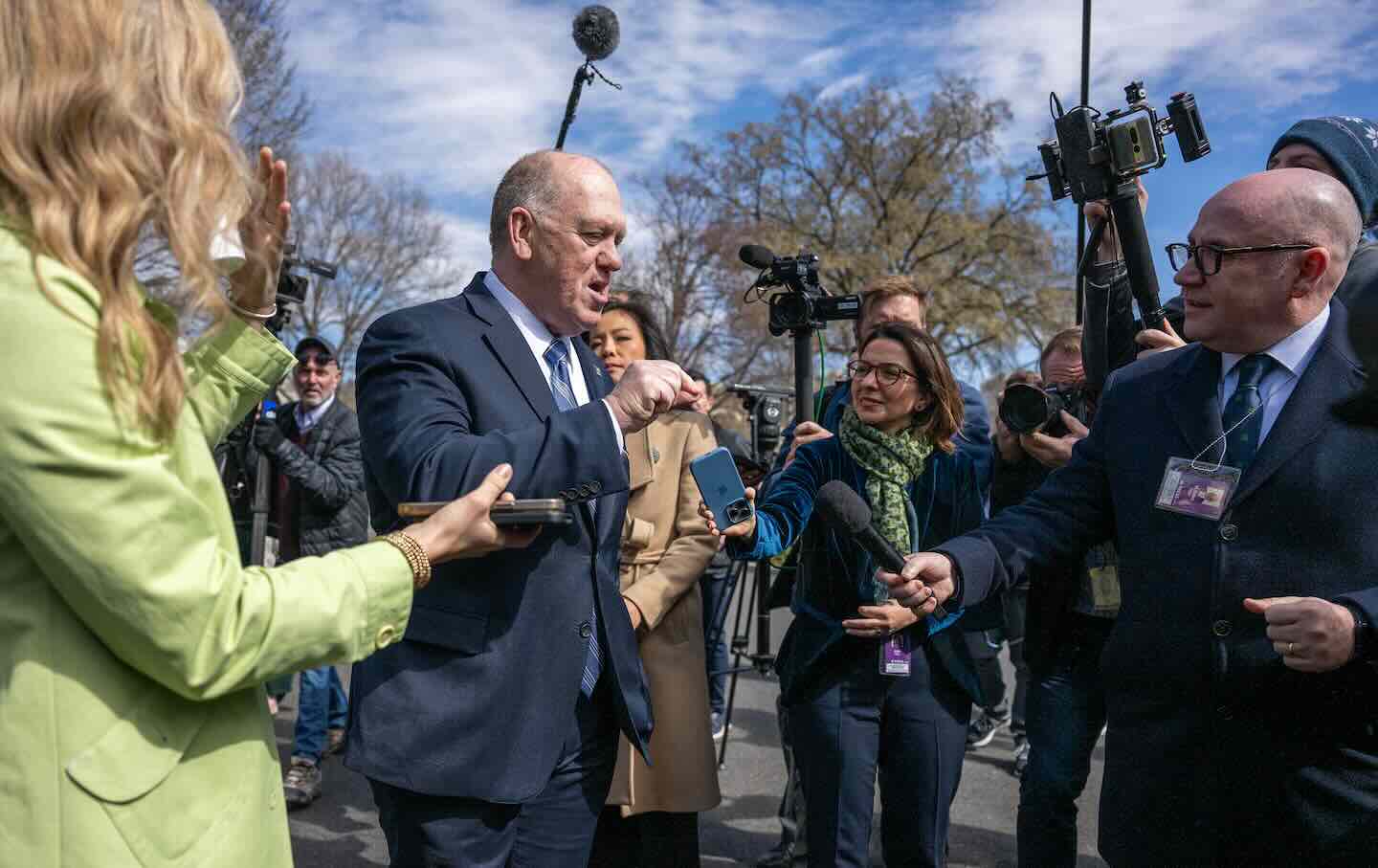
Hey, Irish Catholic Trump Supporters: Your People Were the Original Alien Enemies Hey, Irish Catholic Trump Supporters: Your People Were the Original Alien Enemies
Irish Catholics who back Trump would do well to remember the origins of the Alien Enemies Act.
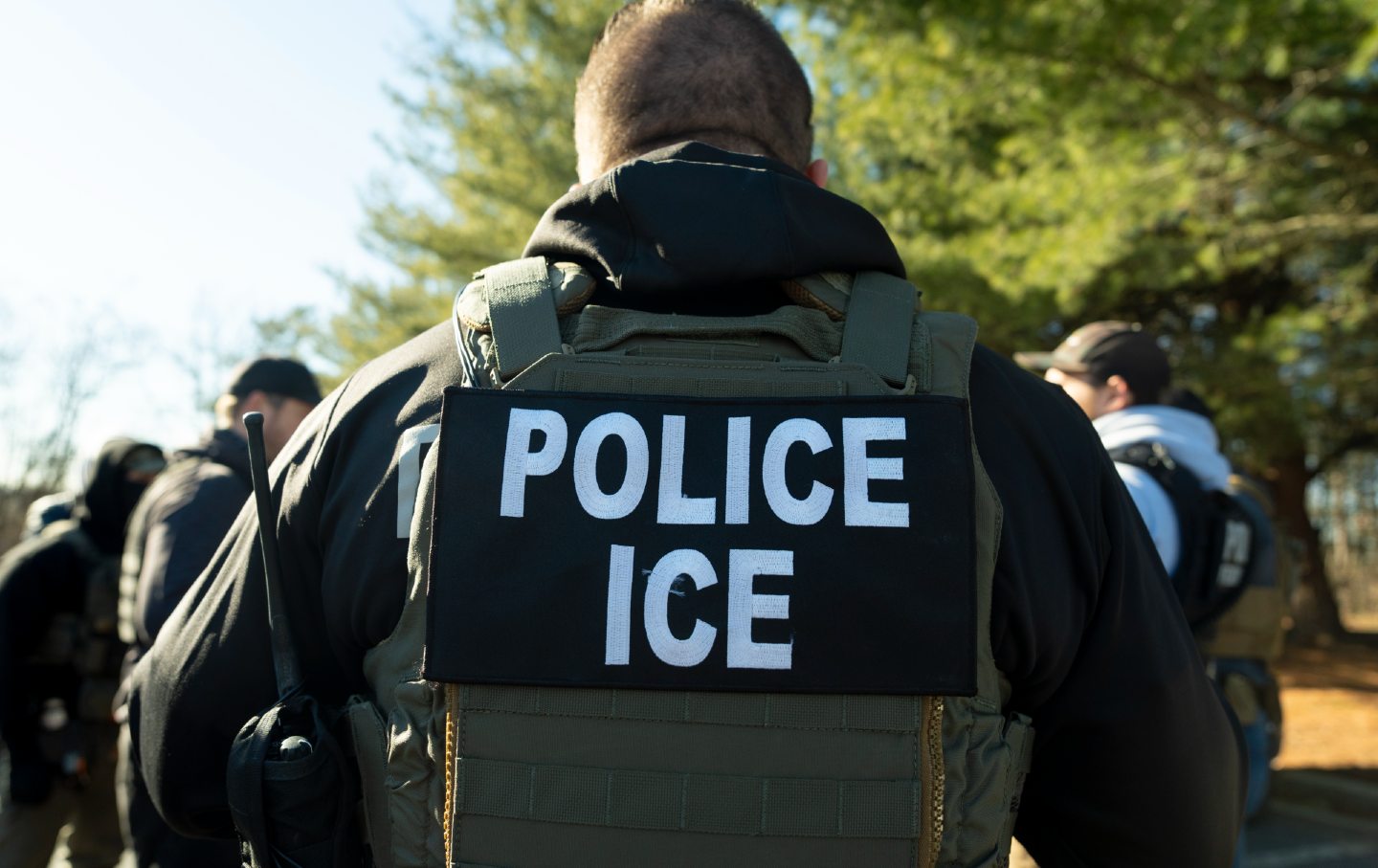
“Essentially Cages”: ICE Is Using Courthouse Cells for Lengthy Detentions “Essentially Cages”: ICE Is Using Courthouse Cells for Lengthy Detentions
Detainees report not having access to private toilets, showers, hygiene products, and lifesaving HIV and diabetes medication.
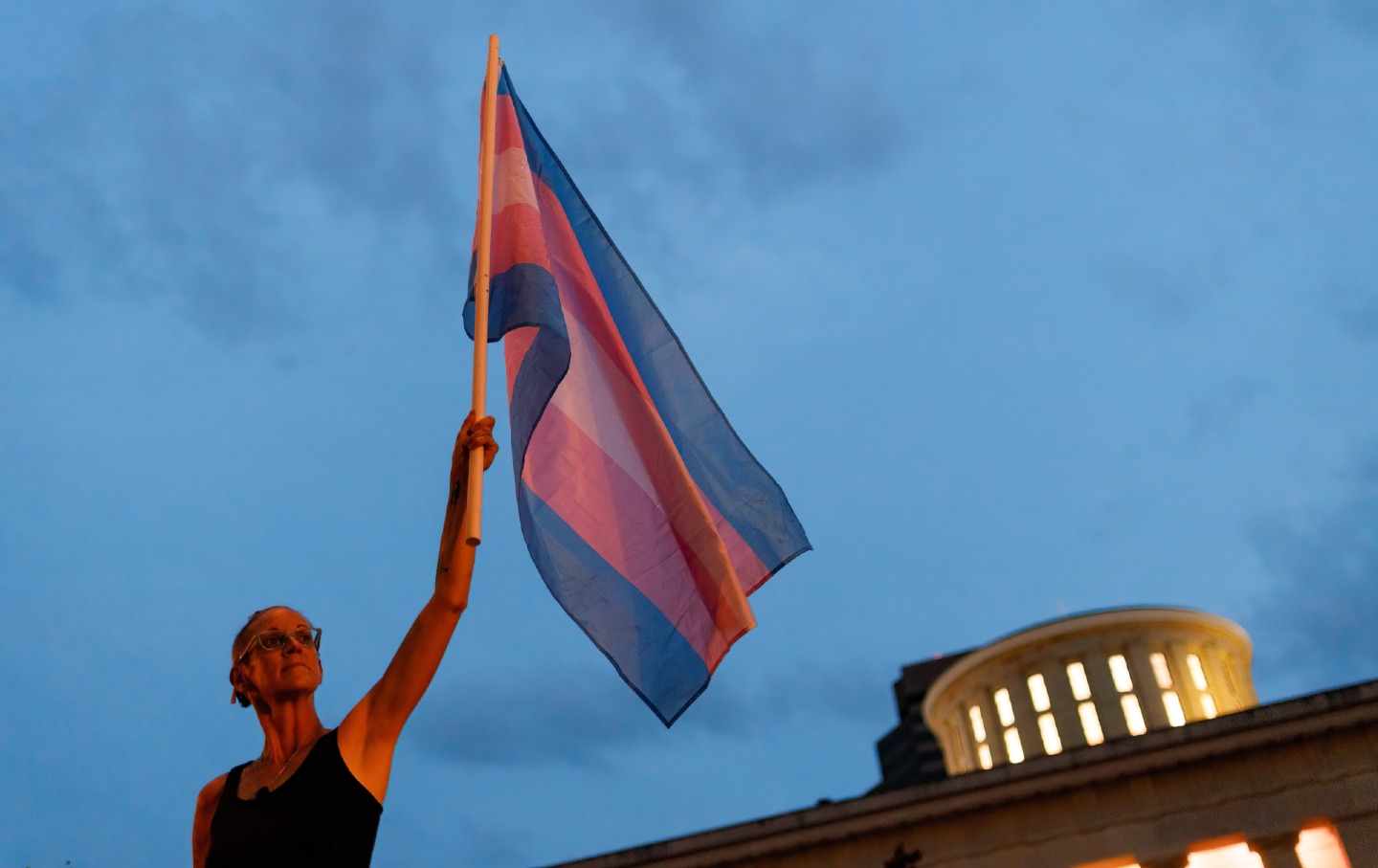
“I’m Terrified”: Trans-Feminine Athletes in Their Own Words “I’m Terrified”: Trans-Feminine Athletes in Their Own Words
In part two of a series, trans women athletes describe what it’s like to compete in the Trump era.
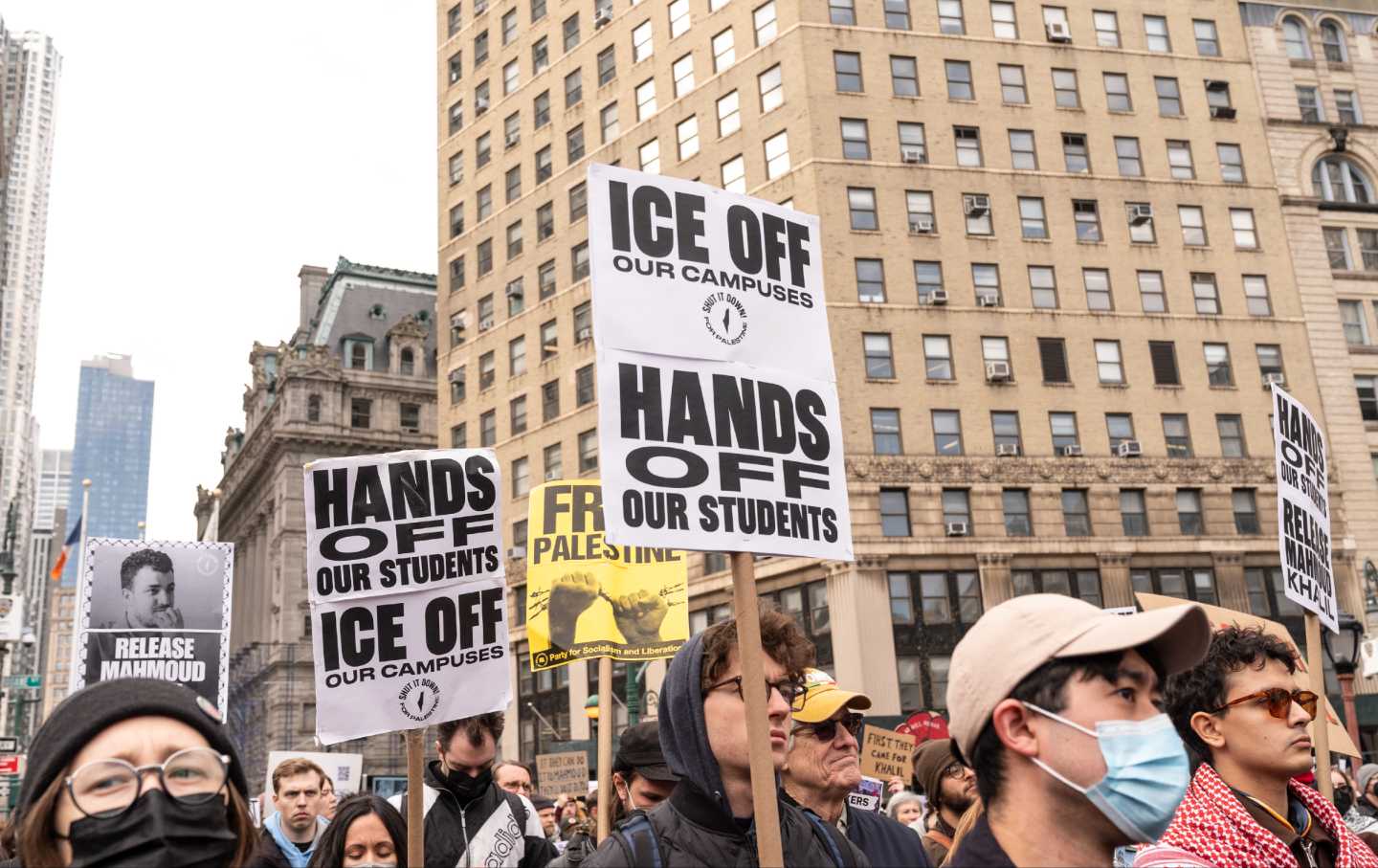
Columbia Is Betraying Its Students. We Must Change Course. Columbia Is Betraying Its Students. We Must Change Course.
The administration is choosing complicity over courage in the case of Mahmoud Khalil. It’s time for the faculty to demand a new path.

The Trans Cult Who Believes AI Will Either Save Us—or Kill Us All The Trans Cult Who Believes AI Will Either Save Us—or Kill Us All
What the Zizians, a trans vegan cult allegedly behind multiple murders, can teach us about radicalization and our tech-addled politics.
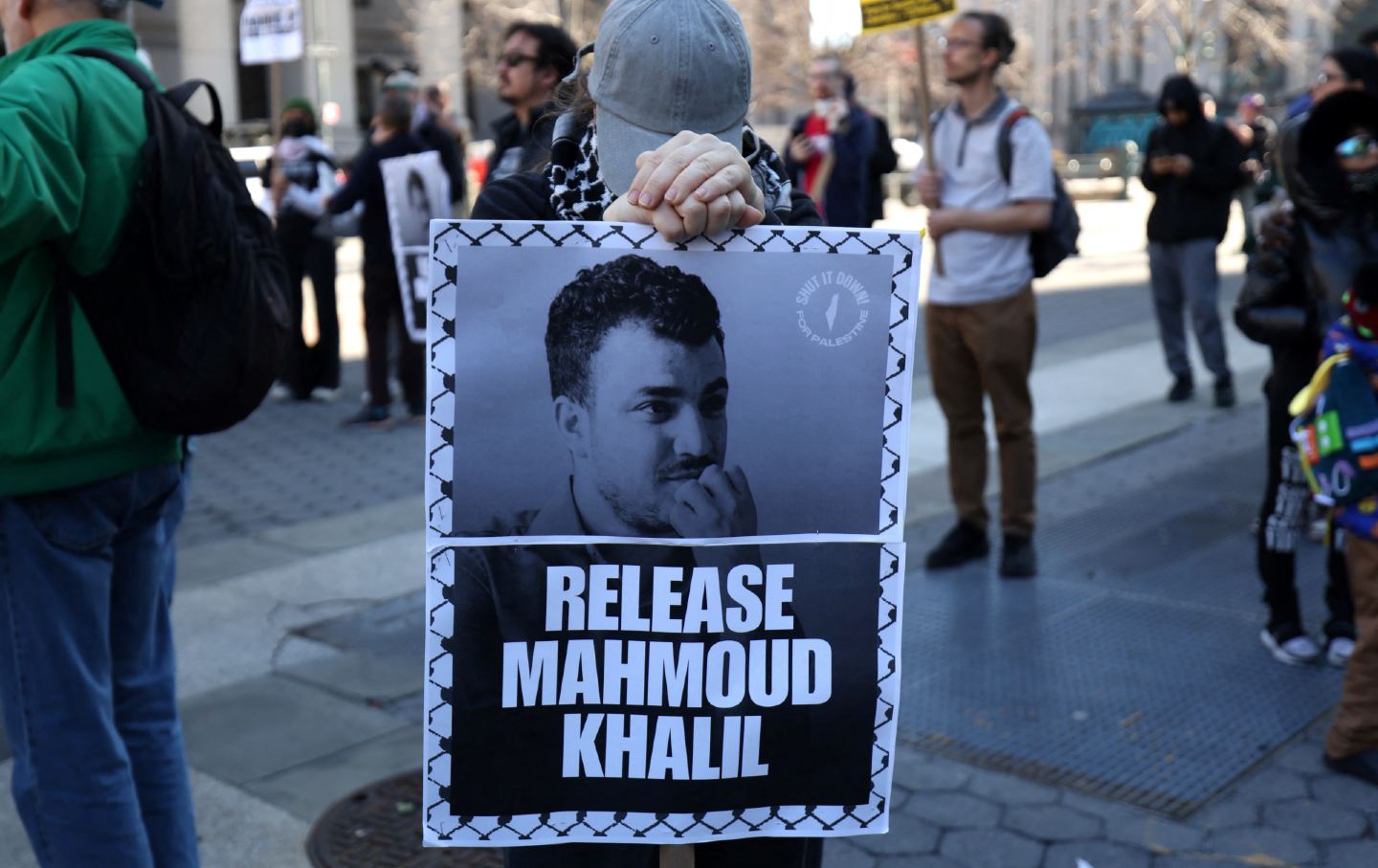
We Are Asking the Wrong Questions About Mahmoud Khalil’s Arrest We Are Asking the Wrong Questions About Mahmoud Khalil’s Arrest
The only relevant question is not “How can the government do this?” It is “How can we who oppose this fascist regime stop it?”


